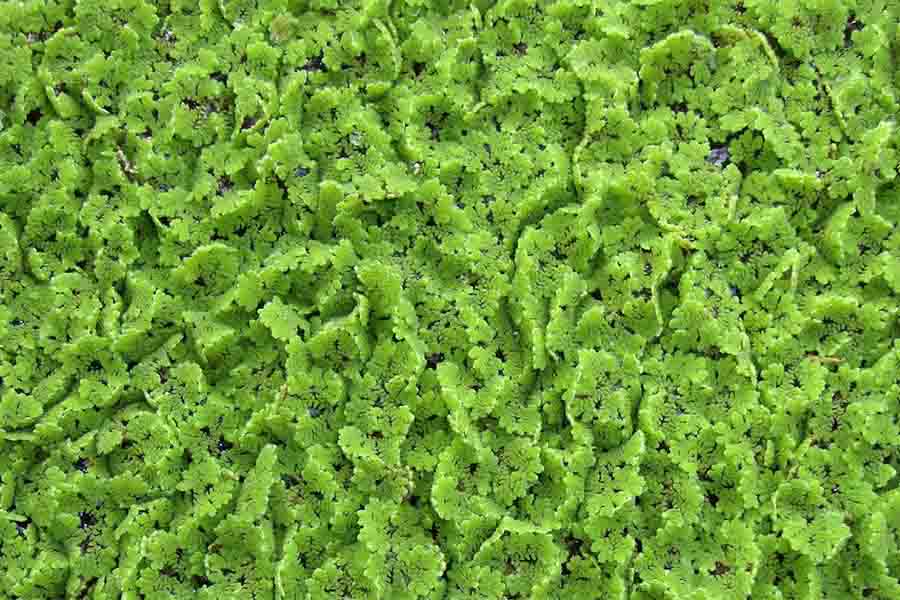
The issue of global warming has been bugging the international community for a long time now — decades even. Many efforts have been made to counter this problem, but, they haven’t been very fruitful per se. Now, Silicon Valley scientists may have discovered a real-life cheat code — mutated trees! Let’s get into what these “Super Trees” do and how they help to “chill down” the climate.
Super Trees Overview:
Problem: Global warming
Global warming is the increase in Earth’s average surface temperature due to the buildup of greenhouse gases such as carbon dioxide and methane in the atmosphere. It has been worsening since the early 1980s, grabbing everybody’s attention. Hence, every company is now trying to minimize emissions, be it by using alternative/recycled materials for their products or by planting trees to achieve a net-zero carbon footprint.

Solution: Photosynthesis
If you don’t know, plants use sunlight, water, and, most importantly, carbon dioxide to produce glucose for themselves. Plants consume some of this glucose as energy, while they use the remaining glucose to build more plant matter, like bark. Hence, afforestation is one of the crucial ways to decrease carbon dioxide in the environment.

- Read our other articles:
Azolla ferns to the rescue
Researchers from Living Carbon, a start-up in Silicon Valley, have uncovered a plant, namely, the aquatic Azolla ferns. These plants were found fossilized inside the Arctic mud and can grow very fast, getting up to 20 meters thick.
Among the technologists, Patric Mellor is trying to genetically mutate the plant so that it can bind more CO2 and is more resilient to decay. They have theorized that if these plants coated the ocean, they could absorb a large chunk of greenhouse gases.

The paleobiologist and Chief Technology Officer, Patrick Mellor, thinks photosynthesis can save the world. The plantation of “photosynthesis-enhanced” poplars has already been started in Georgia’s forest since February 2023. I think we will get the biggest breakthrough on the global warming problem if this works.
- Check this out: This drone can pollinate flowers like a bee
Opinion: Professionals on Super Trees
The output of the “Super Trees” is still not guaranteed, as the project is still in a test phase. While some experts trust this process, some professionals are still a bit unsure about its overall effectiveness. The burning questions are, if the trees will have an inverse effect on the rest of the forest and if this plantation can decrease carbon dioxide in the atmosphere at all.
Even Steve Strauss, a prominent tree geneticist at Oregon State University, has conflicting thoughts about the “Super Trees”. He says:
I’m kind of a little conflicted that they’re going ahead with this—all the public relations and the financing—on something that we don’t know if it works.
Verdict: Future of “Super Trees”
Yes, the tests for the viability of these super trees (azolla ferns) are still going on. The company Living Carbon is selling credits for the carbon their trees absorb, like a subscription-based purchase to fund the entire project. They are also working with larger companies and plan to deliver credits to them later on. Development like this fills me with hope that someday we will find a proper counter to this global environmental problem.
- Meanwhile, check out our DJI Mini 4 Pro review.
















![Best Laptops Under Rs. 70,000 in Nepal [Updated] Best Laptops Under 70000 in Nepal 2023](https://cdn.gadgetbytenepal.com/wp-content/uploads/2023/01/Best-Laptops-Under-NPR-70000-in-Nepal-February-2023.jpg)
![Best Laptops Under Rs. 60,000 in Nepal [Updated] Best Laptops under NPR 60000 in Nepal - June Update](https://cdn.gadgetbytenepal.com/wp-content/uploads/2023/06/Best-Budget-Laptops-under-Rs-60000-in-Nepal-2023-June-Update.jpg)

![Best Ultrabooks To Buy in Nepal 2024 [Updated] Best Ultrabook Laptops in Nepal 2023 - June Update](https://cdn.gadgetbytenepal.com/wp-content/uploads/2023/04/Best-Ultrabook-Laptops-in-Nepal-2023-June-Update.jpg)
![Best Mobile Phones Under Rs. 15,000 in Nepal [Updated] Best Phones Under 15000 in Nepal 2024 Budget Smartphones Cheap Affordable](https://cdn.gadgetbytenepal.com/wp-content/uploads/2024/03/Best-Phones-Under-15000-in-Nepal-2024.jpg)
![Best Mobile Phones Under Rs. 20,000 in Nepal [Updated] Best Mobile Phones Under NPR 20000 in Nepal 2023 Updated Samsung Xiaomi Redmi POCO Realme Narzo Benco](https://cdn.gadgetbytenepal.com/wp-content/uploads/2024/01/Best-Phones-Under-20000-in-Nepal-2024.jpg)
![Best Mobile Phones Under Rs. 30,000 in Nepal [Updated]](https://cdn.gadgetbytenepal.com/wp-content/uploads/2023/12/Best-Phones-Under-30000-in-Nepal-2024.jpg)
![Best Mobile Phones Under Rs. 40,000 in Nepal [Updated] Best Phones Under 40000 in Nepal 2024 Smartphones Mobile Midrange](https://cdn.gadgetbytenepal.com/wp-content/uploads/2024/02/Best-Phones-Under-40000-in-Nepal-2024.jpg)
![Best Mobile Phones Under Rs. 50,000 in Nepal [Updated] Best Phones Under 50000 in Nepal 2024 Smartphones Midrange](https://cdn.gadgetbytenepal.com/wp-content/uploads/2024/02/Best-Phones-Under-50000-in-Nepal-2024.jpg)
![Best Flagship Smartphones To Buy In Nepal [Updated] Best Smartphones in Nepal 2024 Flagship Premium Samsung Apple iPhone Xiaomi OnePlus Honor](https://cdn.gadgetbytenepal.com/wp-content/uploads/2023/09/Best-Smartphones-in-Nepal-2024.jpg)